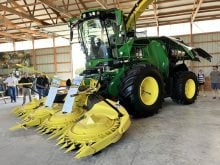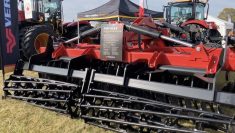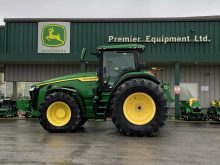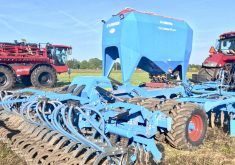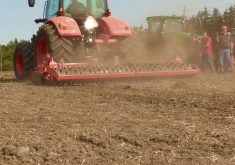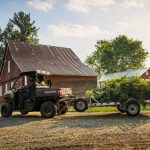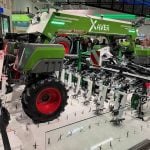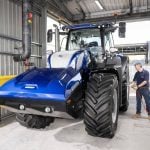Glacier FarmMedia – A new lineup of John Deere-branded strip-till rigs is expected to be available this winter.
The tillage implements are produced by Environmental Tillage Systems, which sells them under the brand name SoilWarrior.
The Deere-branded models are called John Deere ST, including ST12 and ST16 Integral that attach to the three-point hitch, and the ST12, ST16 and ST18 that are drawn models.
Read Also
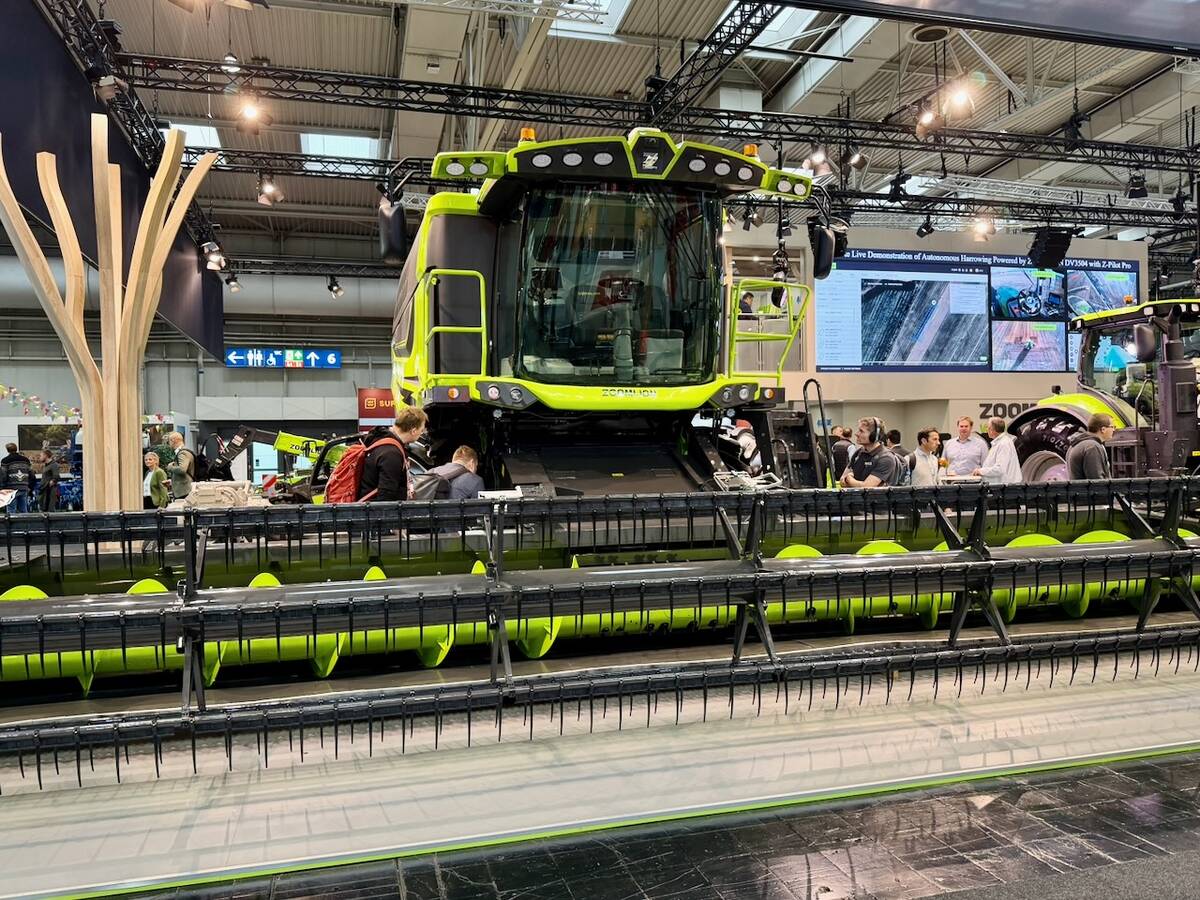
Agritechnica 2025: Day 3
Zoomlion’s diesel-electric hybrid combine drives draws interest, data standards look to keep up to technology change and tractors of the year are named at German farm show Agritechnica 2025.
This lineup replaces the 2510S Strip-Till Residue Master Applicator that Deere stopped building last year.
Deere made a similar licensing agreement last year when it started selling its P600 Precision Air-Hoe Drills series produced by SeedMaster.
Ryan Jardon, John Deere marketing manager, said the series of strip-till equipment will be available for order in February 2023 through John Deere dealerships.
“Over the past couple of years, we haven’t been serving the strip-till market, but it’s a spot that we needed to get back into because of customer demand,” Jardon said.
[RELATED] Fertilizer placement, safe fertilizer rates in strip till studied
A variety of row-spacings are available. Drawn models are available in 12, 16 or 18 rows, with tanks that can carry up to 10 tons of dry fertilizer.
The ST12 and ST16 are available on 30-inch spacing and the ST18 is available on 20- or 22-inch spacing. Integral models are available in 12 or 16 rows and on 30-inch spacing.
There are scales in the commodity tanks on the drawn units to help operators keep track of fertilizer amounts.
“Customers could also apply either liquid or anhydrous with them as well. Any distribution system for the liquid or anhydrous would be sourced via a third party,” Jardon said.
“The Integral units, which would be for the three-point on a tractor, would be compatible with either liquid or anhydrous. If you’re going to do a dry system, that would be on your own with that Integral system.”
Customers can choose between a shank or a dual coulter for the strip-tiller.
“If you want, you can swap them out. That’s one thing with how our system works, it’s relatively simple to swap between a coulter and a shank unit. There’s a series of bolts on each one, and you can take one off and bolt on the other one in place,” Jardon said.
There are two options for the closing system, a round bar and a flat bar.
“That flat bar is adjustable to give you different degrees of berming. So, it’ll essentially leave it either completely flat or it would leave kind of a little bit of a hill-shaped texture. The flat bar has varying degrees of firming that it would leave.”
The row cleaners are adjusted from the cab so operators can vary how aggressive they’re set, depending on residue conditions.
The strip-till line up is compatible with John Deere’s Active Implement Guidance. John Deere’s AutoPath uses the strip-till pass as the source path for planters to follow.
John Deere AutoTrac and AutoTrac turn automation can be used with the drawn implements to provide automated control of steering and speed.
The John Deere operations centre will document each field pass when used with the strip-till implements.
“A lot of sugar beets are grown in 22-inch rows and so we’re pretty proud to have a 22-inch strip-till bar that would that allow strip-till in sugar beet production,” Jardon said.
– This article was originally published at The Western Producer.






